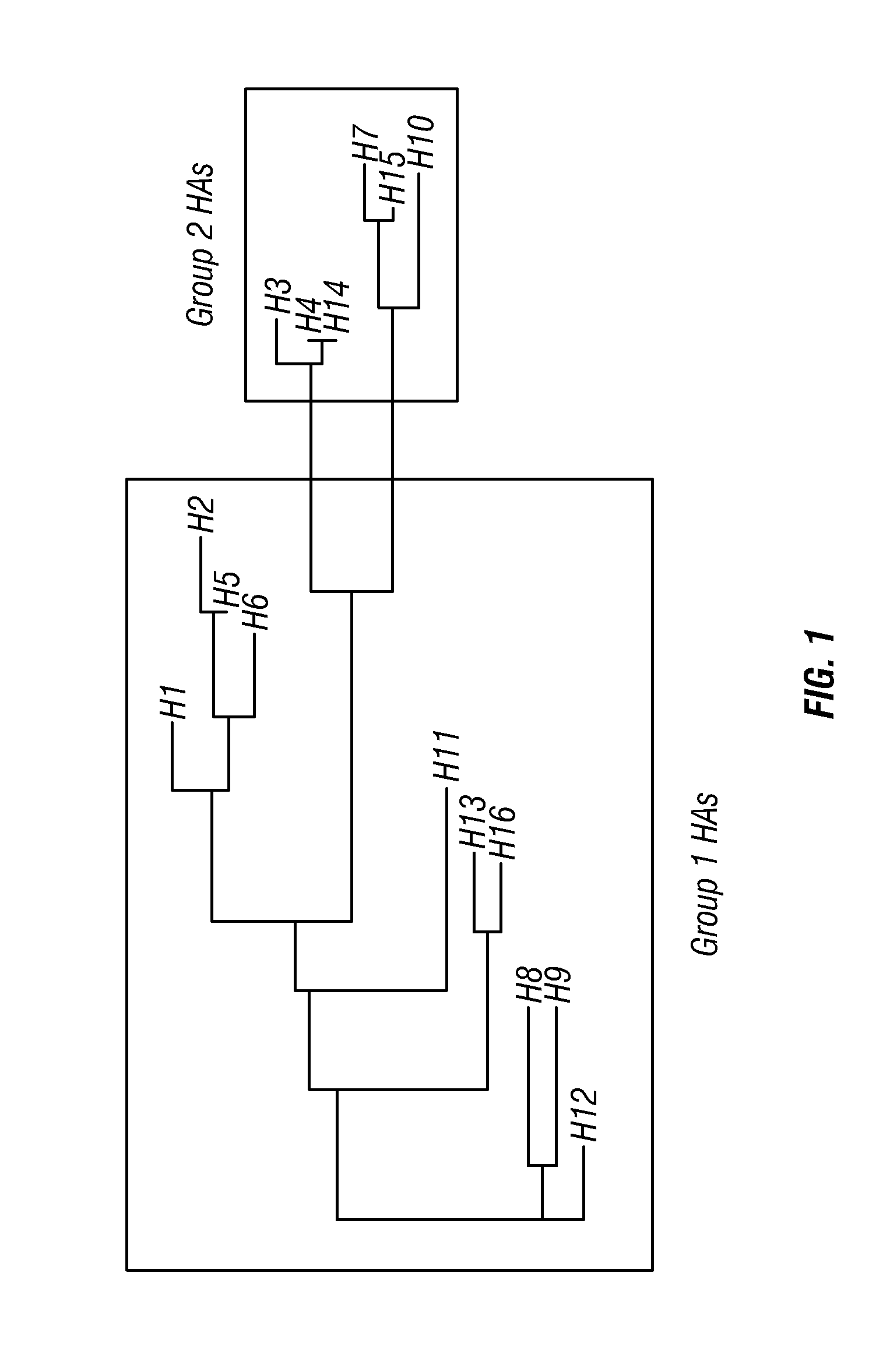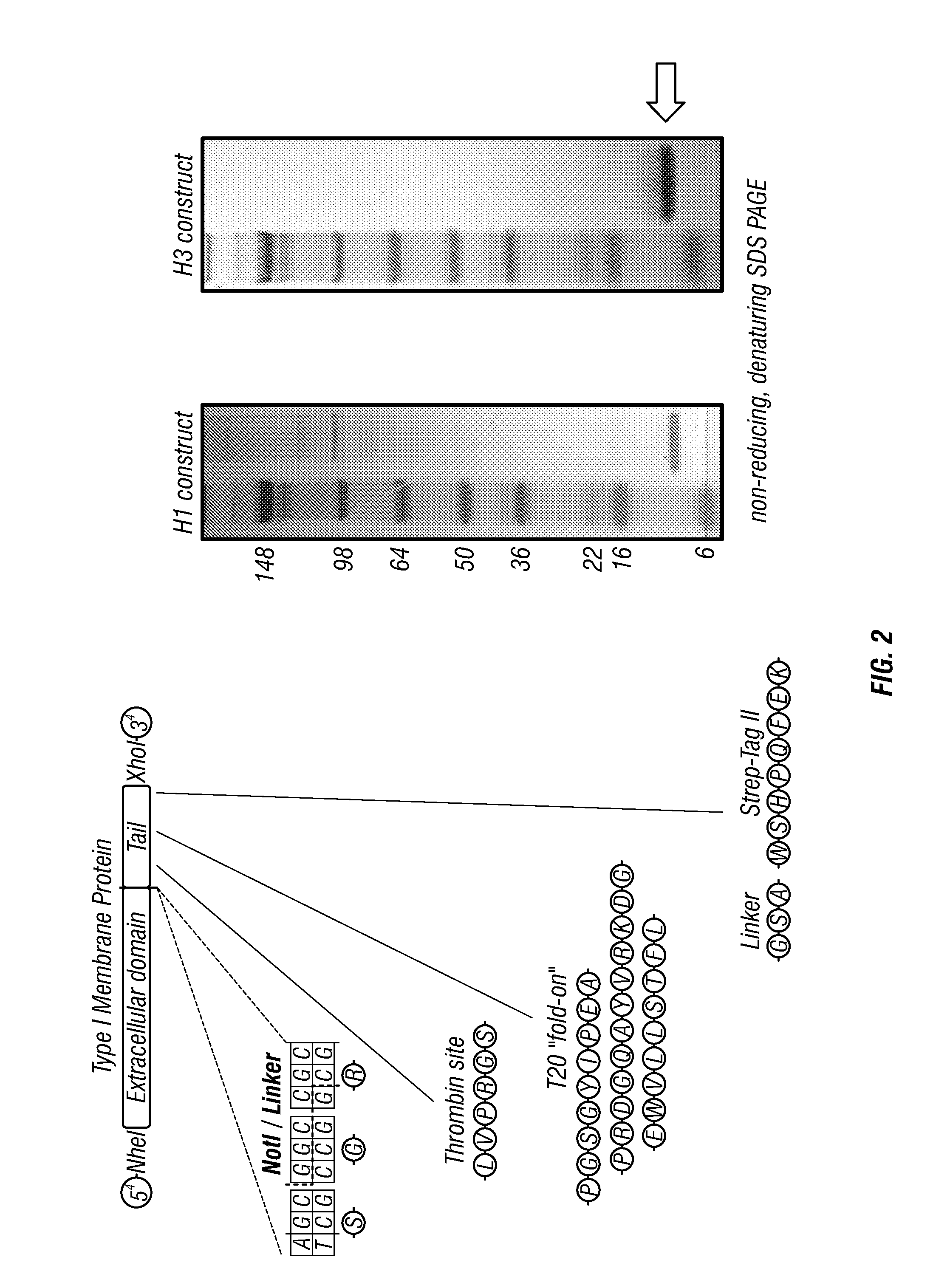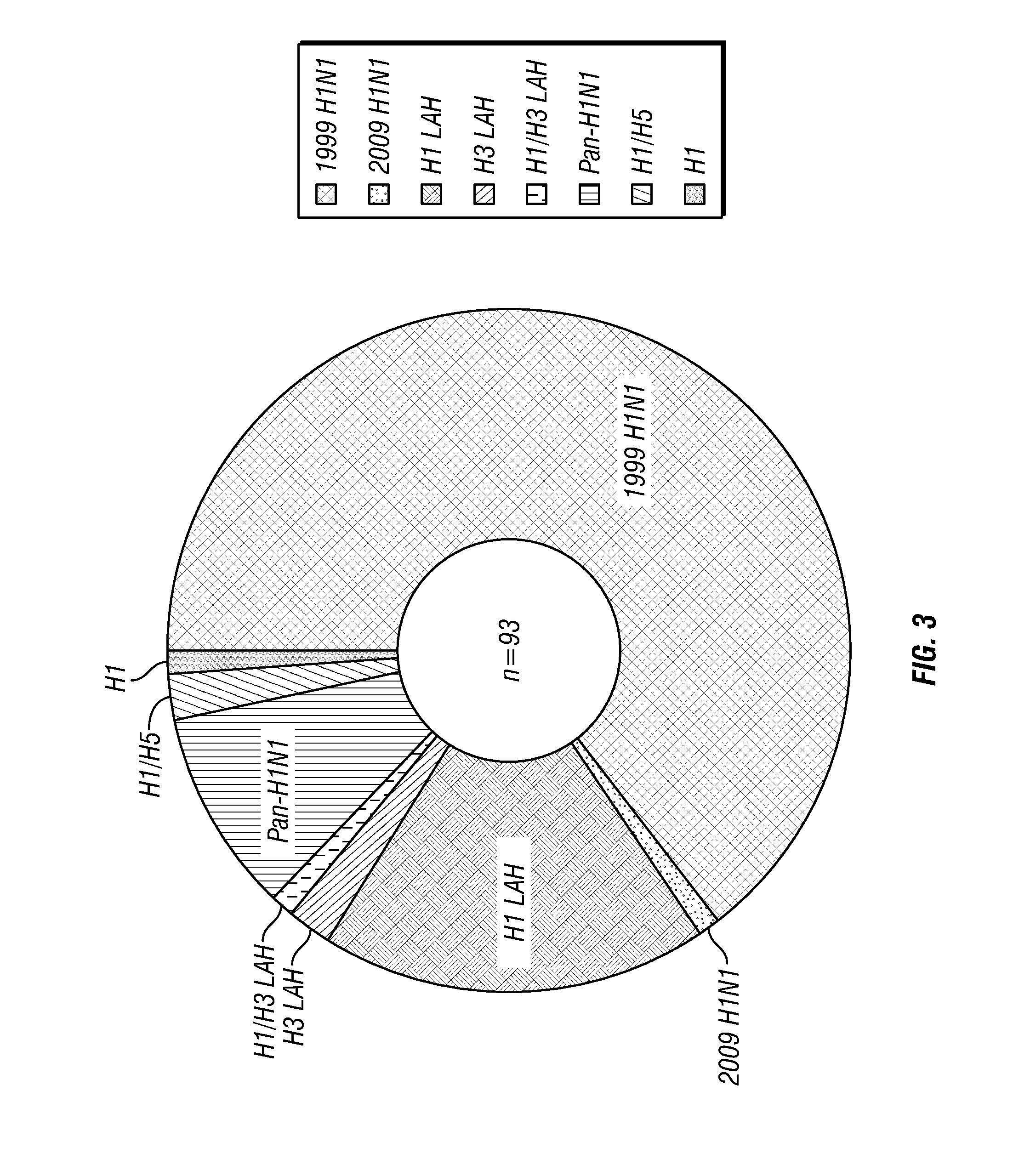Influenza virus antibodies and immunogens and uses therefor
- Summary
- Abstract
- Description
- Claims
- Application Information
AI Technical Summary
Benefits of technology
Problems solved by technology
Method used
Image
Examples
example 1
[0249]First-generation long alpha-helix (LAH) antigens. The 16 HA subtypes of influenza A fall into two phylogenetic groupings, Group 1 (H1, H2, H5, H6, H8, H9, H11, H12, H13, and H16) and Group 2 (H3, H4, H7, H10, H14, and H15). Within a group, there is a high sequence-identity within the influenza stalk region, suggesting that most stalk Abs broadly react within a phylogenetic group, but that reactivity across Group 1 and Group 2 HAs would be more difficult to achieve (FIG. 1). To screen for LAH Abs, the inventors synthesized two constructs based on the LAH of H1 HA, a representative of Group 1 HAs, and the LAH of H3 HA, a representative of Group 2 HAs. Those constructs were designated H1frThrST and H3frThrST with a shared architecture consisting of a modified mouse kappa leader sequence followed by the LAH domain (residues 76-130 of HA2), an SGR (serine, glycine, arginine) linker, a thrombin protease cleavage site, a T20 foldon trimerization domain, a GSA (glycine, serine, alanin...
example 2
[0255]Pan-HA mAbs that bind both Group 1 and Group 2 HAs: 3E22 and 5I17. Screening hybridomas from an H5 vaccinee with soluble H5 HA and subsequently on a cross-reactivity ELISA (Table 3), the inventors isolated an unprecedented binding pattern for two hybridomas, 3E22 and 5I17: They bound all soluble HAs on the panel, all Group 1 HAs (H1, H2, H5), and also the Group 2 HA (H3). The lack of detectable binding to the LAH constructs suggested they were binding to the head domain. Consistent with this, the mAb 3E22 exhibited an HAI activity of 488 ng / mL, further suggesting that this class of Abs binds a conserved domain on the globular head that has not been previously recognized. These are the most broadly reactive flu mAbs ever isolated.
[0256]Pan-H1N1 Abs. The inventors identified a mAb, 8F24, generated from B-cells of a human survivor of the 1918 influenza pandemic. 8F24 recognized all H1N1 strains that the inventors tested with and showed reactivity against H3 HA at high concentrati...
example 3
A. Methods
[0259]Hybridoma generation and recombinant antibody expression. Peripheral blood mononuclear cells (PBMCs) were isolated, Epstein Barr virus-transformed in 384 well plates (Nunc) in the presence of 2.5 μg / mL CpG ODN 2006 (Invivogen), 10 μM Chk2 inhibitor II (Sigma C3742), and 1 μg / mL cyclosporine A (Sigma), essentially as previously described Yu et al., 2008b; Yu et al., 2008a. Supernatants from wells containing EBV-transformed lymphoblastoid cell lines were screened for binding activity by ELISA against a panel of recombinant soluble HA proteins. Positive wells were fused with HMMA2.5 myeloma cells to generate hybridoma cell lines that were cloned biologically by limiting dilution, and then the antibody genes were cloned molecularly by RT-PCR using previously described primer sets (Smith et al., 2009; Sblattero and Bradbury, 1998; Lagerkvist et al., 1995) into pGEM-T Easy vector (Promega) and eventually into pEE12.4 / pEE6.4 mammalian expression vectors (Lonza). The immunog...
PUM
| Property | Measurement | Unit |
|---|---|---|
| Temperature | aaaaa | aaaaa |
| Temperature | aaaaa | aaaaa |
| Volume | aaaaa | aaaaa |
Abstract
Description
Claims
Application Information
 Login to View More
Login to View More - R&D
- Intellectual Property
- Life Sciences
- Materials
- Tech Scout
- Unparalleled Data Quality
- Higher Quality Content
- 60% Fewer Hallucinations
Browse by: Latest US Patents, China's latest patents, Technical Efficacy Thesaurus, Application Domain, Technology Topic, Popular Technical Reports.
© 2025 PatSnap. All rights reserved.Legal|Privacy policy|Modern Slavery Act Transparency Statement|Sitemap|About US| Contact US: help@patsnap.com



